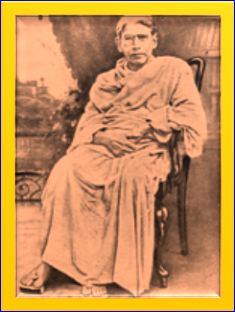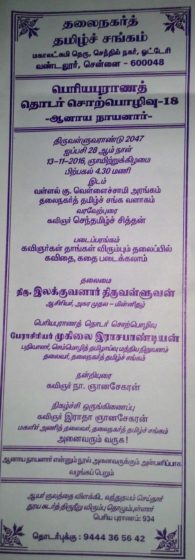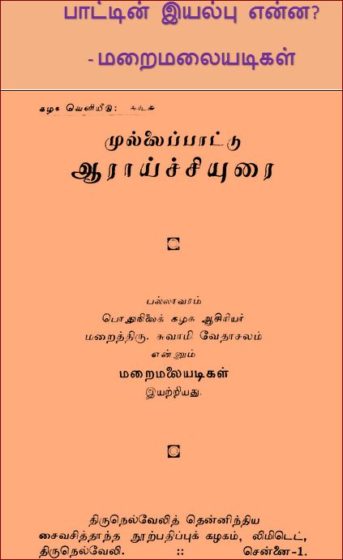சனி, 5 நவம்பர், 2016
SL Navy ‘revenge’ against Tamil fishermen continues in Mannaar
SL Navy ‘revenge’ against Tamil fishermen continues in Mannaar
[TamilNet, Friday, 04 November 2016, 21:20 GMT]
The occupying navy of genocidal Sri Lanka has been harassing the fishermen from Mannaar island in the early hours of Friday. The latest Sinhala navy aggression was an act of ‘revenge’ against Tamil fishermen in Mannaar as the SL Navy commander of Chilaavaththu’rai proclaimed it on 18 October, when the fishermen Arippu village situated far away in the mainland in Musali division, confronted two criminal Navy personnel, who had been committing a series of violent thefts in the village. On Friday, SL Navy at Periya-kadai jetty near the main bridge in Mannaar city, was harassing more than 1,000 Tamil fishermen, embarking on fishing from the jetty from three GS divisions of Mannaar island. The fishermen were asked to show ‘pass documents’ documenting every item they were having on board in their fishing vessel.
https://soundcloud.com/tamilnet
The occupying navy of genocidal Sri Lanka has been harassing the fishermen from Mannaar island in the early hours of Friday. The latest Sinhala navy aggression was an act of ‘revenge’ against Tamil fishermen in Mannaar as the SL Navy commander of Chilaavaththu’rai proclaimed it on 18 October, when the fishermen Arippu village situated far away in the mainland in Musali division, confronted two criminal Navy personnel, who had been committing a series of violent thefts in the village. On Friday, SL Navy at Periya-kadai jetty near the main bridge in Mannaar city, was harassing more than 1,000 Tamil fishermen, embarking on fishing from the jetty from three GS divisions of Mannaar island. The fishermen were asked to show ‘pass documents’ documenting every item they were having on board in their fishing vessel.
https://soundcloud.com/tamilnet
The control was being carried out
on specific instructions from the Fisheries Ministry in Colombo the
Sinhala navy personnel told the fishermen.
Only three fishermen could be on board a fishing vessel, according to SL Navy officers who were almost interrogating the fishermen.
The fishermen were also told that they could not be in possession of any net or tool that has not been mentioned in the ‘document’ which, according to the SL Navy, should have been issued by the SL Fisheries Ministry. The fishermen have never heard such mentioning of particular tools and nets, which they had to document, even during the times of war.
30-year-old Edin Baro from Panangkaddik-koddu was one of the fishermen to be blocked by the SL Navy. “We were told that there cannot be more than 3 persons in each boat and that there should be no shoe, coir, fishing tackle or glass,” he said.
When the representatives of the fishermen contacted the officials at the Fisheries Ministry in Colombo over the phone to ask about the instructions, the response from the fisheries officials was that there was no such specific instruction issued to the SL Navy in Mannaar.
Tension prevailed as the fishermen, deprived from fishing, started to agitate against the SL Navy harassment at the jetty.
The SL Navy was telling the fishermen that it was acting on the instructions from SL Fisheries Ministry and the officers of the SL Navy began to insist upon that the fishermen should at least submit a ‘common letter’ issued by the SL Ministry.
50-year-old George Praba, a fisherman from Panangkaddik-koddu was also blaming the SL Fisheries Ministry for not utilising the fishermen with proper documents for stake net fishing (kaddu-valai) despite a High Court ruling to do so.
The SL Navy has made it a practice to use that as a reason to harass the fishermen engaging in kaddu-valai fishing in the seas south of Mannaar.
Only three fishermen could be on board a fishing vessel, according to SL Navy officers who were almost interrogating the fishermen.
The fishermen were also told that they could not be in possession of any net or tool that has not been mentioned in the ‘document’ which, according to the SL Navy, should have been issued by the SL Fisheries Ministry. The fishermen have never heard such mentioning of particular tools and nets, which they had to document, even during the times of war.
30-year-old Edin Baro from Panangkaddik-koddu was one of the fishermen to be blocked by the SL Navy. “We were told that there cannot be more than 3 persons in each boat and that there should be no shoe, coir, fishing tackle or glass,” he said.
When the representatives of the fishermen contacted the officials at the Fisheries Ministry in Colombo over the phone to ask about the instructions, the response from the fisheries officials was that there was no such specific instruction issued to the SL Navy in Mannaar.
Tension prevailed as the fishermen, deprived from fishing, started to agitate against the SL Navy harassment at the jetty.
The SL Navy was telling the fishermen that it was acting on the instructions from SL Fisheries Ministry and the officers of the SL Navy began to insist upon that the fishermen should at least submit a ‘common letter’ issued by the SL Ministry.
50-year-old George Praba, a fisherman from Panangkaddik-koddu was also blaming the SL Fisheries Ministry for not utilising the fishermen with proper documents for stake net fishing (kaddu-valai) despite a High Court ruling to do so.
The SL Navy has made it a practice to use that as a reason to harass the fishermen engaging in kaddu-valai fishing in the seas south of Mannaar.
The latest harassment comes 7 days after the SL Navy received a strong message from Justice Alex Raja at Mannaar Courts that they should cease their acts of revenge and harassments against the fishermen of Arippu.
Nine Tamil fishermen from Arippu were arrested by the Sinhala police, which was collaborating with the SL Navy.
The SL police initially promised to investigate the SL Navy thieves in front of the public, priests and Tamil politicians when the SL Navy culprit was in the custody of the villagers on 18 October. But, after the civilians handed over the culprit to the SL Police, there was no talk of legal action against the alleged SL Navy squad involved in criminal activity.
Six Tamil fishermen were arrested on 21 October, brought to Mannaar court and remanded at Vavuniyaa prison. On 27 October, three more civilians were arrested and a case against the nine was taken up with an identification parade. One of the criminal SL Navy person was present along with three other SL Navy sailors to identify the villagers who chased and captured the Sinhala navy criminal, who identified himself as ‘Manchula’. The navy man was in possession of two knives and was severely beaten up by the villagers.
While the case against 9 civilians is being taken up for investigations and hearing, there are no signs of any case being filed against the criminal navy men, who were the real culprits.
The nine Tamil villagers were released on surety bail on 27 October. The case against them will continue on 08 December, legal sources in Mannaar said.
Chronology:
19.06.09 Sinhalicisation insinuated in Musali
Genocidal Colombo deploys Tamils against Muslims in Ampaa'rai
Genocidal Colombo deploys Tamils against Muslims in Ampaa'rai
[TamilNet, Thursday, 03 November 2016, 20:46 GMT]
Colombo's colonial Governor to Eastern Province and a section of Sinhala officials in the district accompanied with extremist Buddhist monks are co-ordinately deployed in a dangerous plot to set the numerically less Tamils in the district against the majority Tamil-speaking Muslim population, according to concerned Tamil social activists in Ampaa'rai. A number of recent incidents in the district are also proving their concerns. While deploying ‘Army and Archaeology’ as well as Mahaweli, Forest, Wildlife and Tourism related SL ministries, authorities and departments in seizing lands from uprooted Tamils throughout the Eastern Province, the representatives of uprooted Tamils and a section of elected politicians at various levels in Ampaa'rai district are being coerced into ‘engagements’ with extremist Sinhala-Buddhist monks.
The Sinhala-extremist monks, who have been working against Eezham Tamils since 1950s are now telling the Tamils, who have lost almost everything, that it was not Sinhalese, but Muslims who have seized most of their lands. The monks further tell the Tamil villagers that Sinhalese were at least willing to return some of the agricultural lands seized by them in the past. What about the Muslims, they ask the Tamils with the intention of inciting communal tension between Tamils and Muslims in the district.
In the meantime, a section of elected Tamil politicians and journalists are being coerced by the Governor of the Eastern Province.
Colombo's colonial Governor to Eastern Province and a section of Sinhala officials in the district accompanied with extremist Buddhist monks are co-ordinately deployed in a dangerous plot to set the numerically less Tamils in the district against the majority Tamil-speaking Muslim population, according to concerned Tamil social activists in Ampaa'rai. A number of recent incidents in the district are also proving their concerns. While deploying ‘Army and Archaeology’ as well as Mahaweli, Forest, Wildlife and Tourism related SL ministries, authorities and departments in seizing lands from uprooted Tamils throughout the Eastern Province, the representatives of uprooted Tamils and a section of elected politicians at various levels in Ampaa'rai district are being coerced into ‘engagements’ with extremist Sinhala-Buddhist monks.
The Sinhala-extremist monks, who have been working against Eezham Tamils since 1950s are now telling the Tamils, who have lost almost everything, that it was not Sinhalese, but Muslims who have seized most of their lands. The monks further tell the Tamil villagers that Sinhalese were at least willing to return some of the agricultural lands seized by them in the past. What about the Muslims, they ask the Tamils with the intention of inciting communal tension between Tamils and Muslims in the district.
In the meantime, a section of elected Tamil politicians and journalists are being coerced by the Governor of the Eastern Province.
A group of Tamil youth who engaged
in a voluntary (shramadana) work at the cemetery located in
Periya-neelaava’nai village had cut the trees planted by Muslims. The
youth engaged at voluntary work at the cemetery describe the felling of
the trees as an accident. In the meantime, a group of unknown men have
destroyed gravestones of Tamils and a 5-meter long wall has also been
smashed. It is being alleged as a retaliatory violent act carried out by
Muslims. The episode has caused tension between the two communities.
Periya-neelaava'nai, located 34 km south of Batticaloa city at the border between the Ampaa'rai and Batticaloa districts, has traditionally been a Tamil village. The village has been facing encroachment by Muslims from Maruthamunai and from the coastal side, say local Tamil politicians.
There have been no efforts to facilitate community level engagement among the Tamil-speaking population, concerned Tamil activists in the district say blaming the Tamil politicians as being influenced by the governor to East, Mr Austin Fernando, who is a Sinhalese.
Last Saturday, a group of Buddhist monks, who entered the hillock of Maayakkalli in I’rakkaamam division of Ampaa’rai district placed a Buddha statue with the backing of SL Archaeology Department.
The hillock is located between a Tamil village, known as Maa’nikka-madu and a Muslim village known as Varip-paddaang-cheanai.
Periya-neelaava'nai, located 34 km south of Batticaloa city at the border between the Ampaa'rai and Batticaloa districts, has traditionally been a Tamil village. The village has been facing encroachment by Muslims from Maruthamunai and from the coastal side, say local Tamil politicians.
There have been no efforts to facilitate community level engagement among the Tamil-speaking population, concerned Tamil activists in the district say blaming the Tamil politicians as being influenced by the governor to East, Mr Austin Fernando, who is a Sinhalese.
Last Saturday, a group of Buddhist monks, who entered the hillock of Maayakkalli in I’rakkaamam division of Ampaa’rai district placed a Buddha statue with the backing of SL Archaeology Department.
The hillock is located between a Tamil village, known as Maa’nikka-madu and a Muslim village known as Varip-paddaang-cheanai.
The monks moved the statue into a
land belonging to a Muslim villager. Later, the group of monks, led by
Ambagahapitiye Seelarathana Thero, moved the statue to the top of the
hillock, 500 meters close to Pi’l’laiyaar temple.
Tamil villagers were first to protest against the move. However, the villagers were advised by interfering Tamil politicians to leave the struggle at the hands of the Muslims.
The Chief Minister of Eastern Province, a Muslim, and SL Minister Rauf Hakeem along with other Muslim politicians from the district and in the province have condemned the installation of Buddha statue.
At the same time, a group of Tamil villagers, who lost their agricultural lands to Sinhala colonists in the early 1980s, are being ‘advised’ to meet with the Sinhala Buddhist monks at Kalmunai. The uprooted Tamils have been demanding back their agricultural lands at Thoddaat-churungki Puthukkaadduk-ka'ndam and they have proper LDO permits given to them as part of the Gal Oya scheme in early 1950s.
The Tamil politicians, who welcome this engagement have also come with remarks accusing Muslim leaders for having failed to undertake similar engagement with Tamils.
There is a calculated move on the part of Colombo to cause further divisions among the Tamil-speaking communities in the East. The Tamil National Alliance, particularly the ITAK hierarchy, has failed to act in forging a constructive and conducive environment between the Tamil-speaking communities. The ITAK hierarchy seems to be more aligned with the Sinhala Establishment in Colombo than with the Tamil-speaking sections among the grassroots in the East, particularly in Ampaa'rai, Tamil activists in the East commented.
Related Articles:
01.11.16 Colombo deploys all ministries, departments to complete demo..
Tamil villagers were first to protest against the move. However, the villagers were advised by interfering Tamil politicians to leave the struggle at the hands of the Muslims.
The Chief Minister of Eastern Province, a Muslim, and SL Minister Rauf Hakeem along with other Muslim politicians from the district and in the province have condemned the installation of Buddha statue.
At the same time, a group of Tamil villagers, who lost their agricultural lands to Sinhala colonists in the early 1980s, are being ‘advised’ to meet with the Sinhala Buddhist monks at Kalmunai. The uprooted Tamils have been demanding back their agricultural lands at Thoddaat-churungki Puthukkaadduk-ka'ndam and they have proper LDO permits given to them as part of the Gal Oya scheme in early 1950s.
The Tamil politicians, who welcome this engagement have also come with remarks accusing Muslim leaders for having failed to undertake similar engagement with Tamils.
There is a calculated move on the part of Colombo to cause further divisions among the Tamil-speaking communities in the East. The Tamil National Alliance, particularly the ITAK hierarchy, has failed to act in forging a constructive and conducive environment between the Tamil-speaking communities. The ITAK hierarchy seems to be more aligned with the Sinhala Establishment in Colombo than with the Tamil-speaking sections among the grassroots in the East, particularly in Ampaa'rai, Tamil activists in the East commented.
Related Articles:
01.11.16 Colombo deploys all ministries, departments to complete demo..
வெள்ளி, 4 நவம்பர், 2016
பாட்டின் இயல்பு என்ன? 2 /3 – மறைமலையடிகள்
பாட்டின் இயல்பு என்ன?
2/3
சுருங்கச் சொல்லுங்கால் எங்கெல்லாம்
நமதுணர்வைக் கவர்கின்ற பேரழகு உலக இயற்கையிற் காணப்படுமோ அங்கெல்லாம்
பாட்டு உண்டென்பது தெளியப்படும். ஆயினும், ஒரு நல்லிசைப் புலவனால்
இயற்றப்படுகின்ற பாட்டுப்போல அது நூலினிடத்தே காணப்படுவதில்லையே யெனின்;
நன்கு வினாயினாய், ஒரு நூலின்கண் எழுதப்பட்டு, உலக இயற்கையின் அழகை
நமதுள்ளத்திற் தோன்றக் காட்டி நமக்கு உவப்புணர்வு பயக்குஞ் சொல்லின்
தொகுதியான பாட்டு நூலின்கண் எழுதப்படுகின்ற வடிவுடைய பருப்பொருளாகும்; உலக
இயற்கையின் அழகோடு ஒருங்கொத்து நின்று, கண் முதலான புலன்வழிப் புகுந்து
நமக்கு உவப் புணர்வு மிகுதியினை வருவிக்கும் பாட்டு வடிவம் இல்லாத
நுண்பொருளாகும். இங்ஙன மாகலின் உலக இயற்கையிலெல்லாம் பாட்டு உண்டென்பது
துணிபேயா மென்க.
அல்லாமலும், உயிர் வாழ்நாளில் ஒவ்வொரு
நாளும் நம்முடைய நினைவுகளெல்லாம் உணவு தேடுதலிலும், பொருள் தொகுப்பதிலும்,
மனைவிமக்கட்கு வேண்டுவன திரட்டிக் கொடுத்தலிலும், பிறர் இட்ட ஊழியஞ்
செய்தலிலுமாகப் பலவாறு சிதறி அருமை பெருமையின்றிக் கொன்னே கழிந்து போகும்
மக்களுடைய நினைவுகளுஞ் சொற்களுஞ் செயல்களும் நமக்கு இன்பந் தராவாகலின்
அவற்றை அறிய வேண்டுமென விரும்புவாரும் உலகில் யாரும் இலர். இனி, இவ்வாறு
கழியும் நாட்களில் ஒரோவொருகால் அவர் அறிவு வறிய நினைவுகளின் வேறாகப்
பிரிந்து, உலக இயற்கையிற் படிந்து அதன் வண்ணமாய்த் திரிந்து தெளிவுற்று
விளங்கும்போது அவ்வறிவிற் சுரந்து பெருகும் அரிய பெரிய கருத்துக்களையே நாம்
அறிதற்கு மிக விழைகின்றோம். இங்ஙனந் தோன்றும் அரிய பெரிய கருத்துக்களின்
கோவை ஒழுங்கினையே பாட்டென்றும் அறிதல் வேண்டும்.
இன்னும், மக்கள் வாழ்நாள் என்கின்ற
நீரோடையிலே வறுநினைவுகளான கலங்கற் பெருநீர் பெருகிச் செல்லும்போது, உலக
இயற்கை யென்னும் மலைக் குகைகளிலே அரித்து எடுத்துவந்த அருங்கருத்துக்களான
பொற்றுகள் இடையிடையே ஆழ்ந்து அவ்வோடையின் அடிநிலத்திற் சிதர்ந்து
மின்னிக்கிடப்ப, நல்லிசைப் புலவன் என்னும் அரிப்புக்காரன் மிக விழைந்து
முயன்று அப்பொற்சிதர்களை யெல்லாம் ஒன்றாகப் பொறுக்கி எடுத்துத் தன்
மதிநுட்ப நெருப்பிலிட்டு உருக்கிப் பசும்பொற் பிண்டமாகத் திரட்டித் தருவதே
பாட்டு என்றும் அறிதல் வேண்டும்.
இன்னும், மக்கள் அறிவு என்கின்ற
தித்திப்பான அரிய அமிழ்தம் பலவகையான குற்றங்களடுங் கலப்புற்றுத்
தூயதன்றாய்ப் போக, நல்லிசைப்புலவன் தன் பேரறிவினால் அதனைத் தெளிய வடித்து
அதன் இன்சுவையினை மிகுதிப்படுத்தி, நாமெல்லாம் அதனைப் பருகிப் பெரியதோர்
ஆறுதலடையக் கொடுப்பான்; அங்ஙனங் கொடுக்கப்படுந் தூய இனிய அறிவின்
விளக்கமும் பாட்டென்றே அறிதல் வேண்டும். இக்கருத்துப் பற்றியே மிலிட்டன்
என்னும் ஆங்கிலமொழி வல்ல நல்லிசைப் புலவரும், “பாட்டென்பது மக்கள் மன
அறிவினின்றும் வடித்து இறக்கப்பட்ட தூய அமிழ்தம் ஆம்”1 என்று உரை கூறினார். இது நிற்க.
– மறைமலையடிகள் : முல்லைப்பாட்டு ஆராய்ச்சியுரை


இதற்கு குழுசேர்:
கருத்துகள் (Atom)













